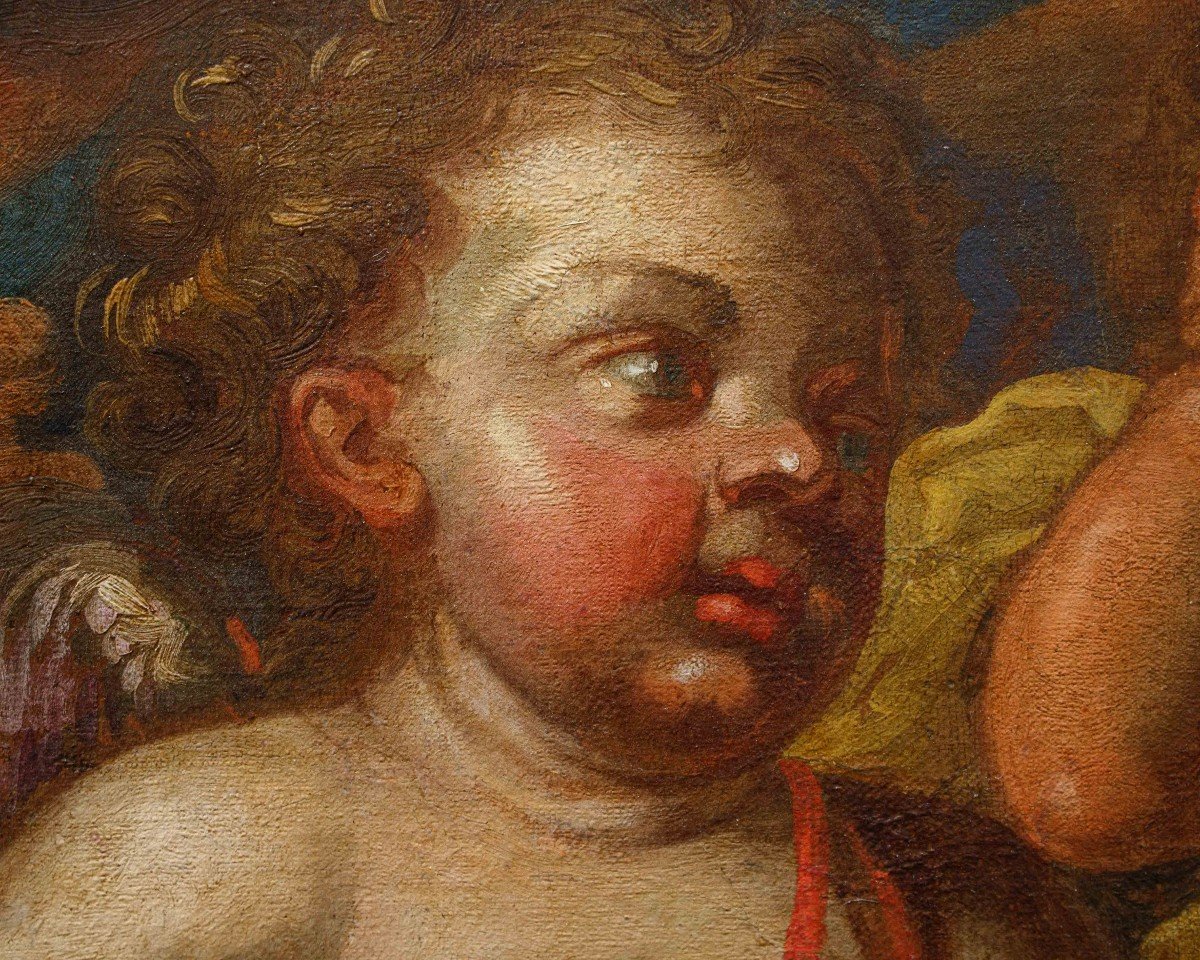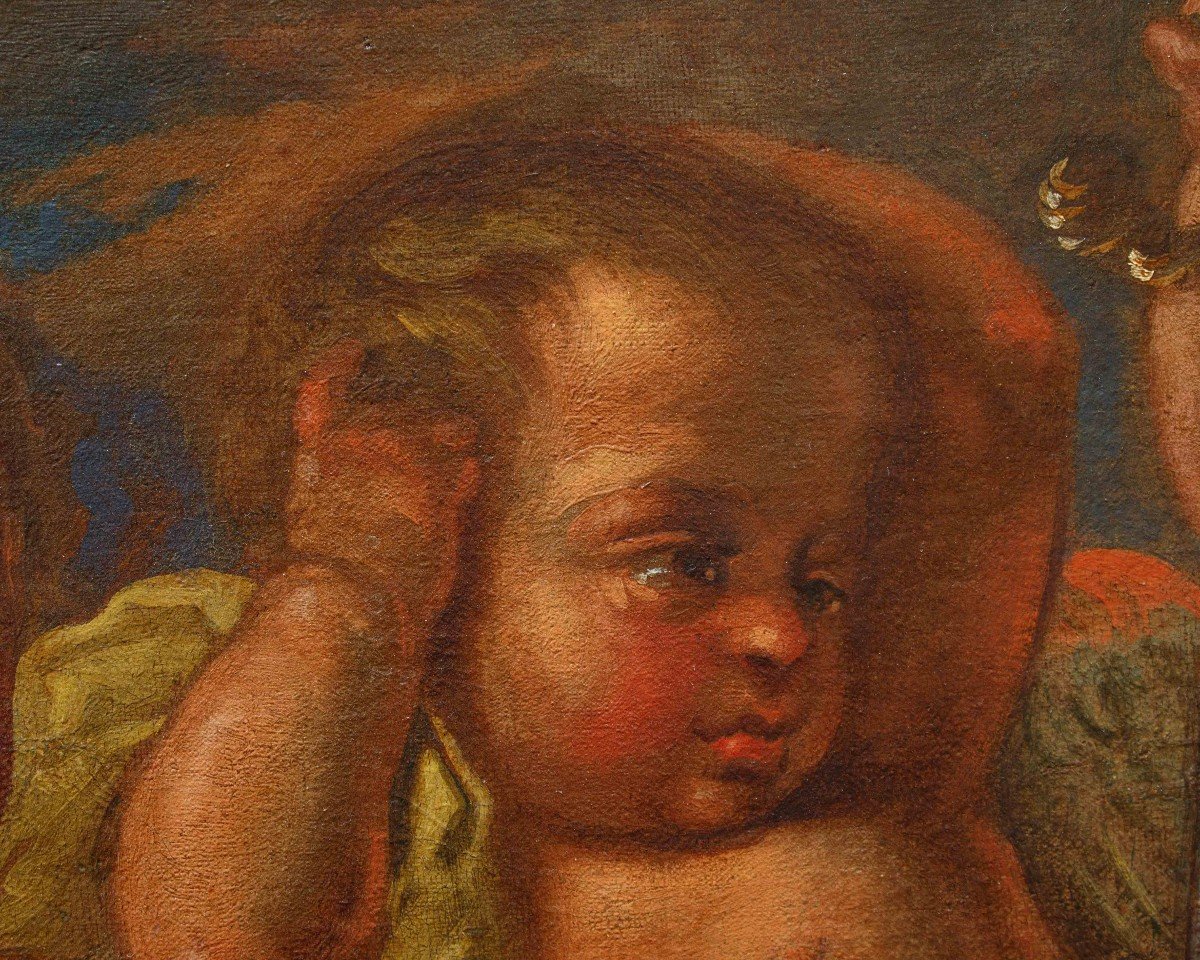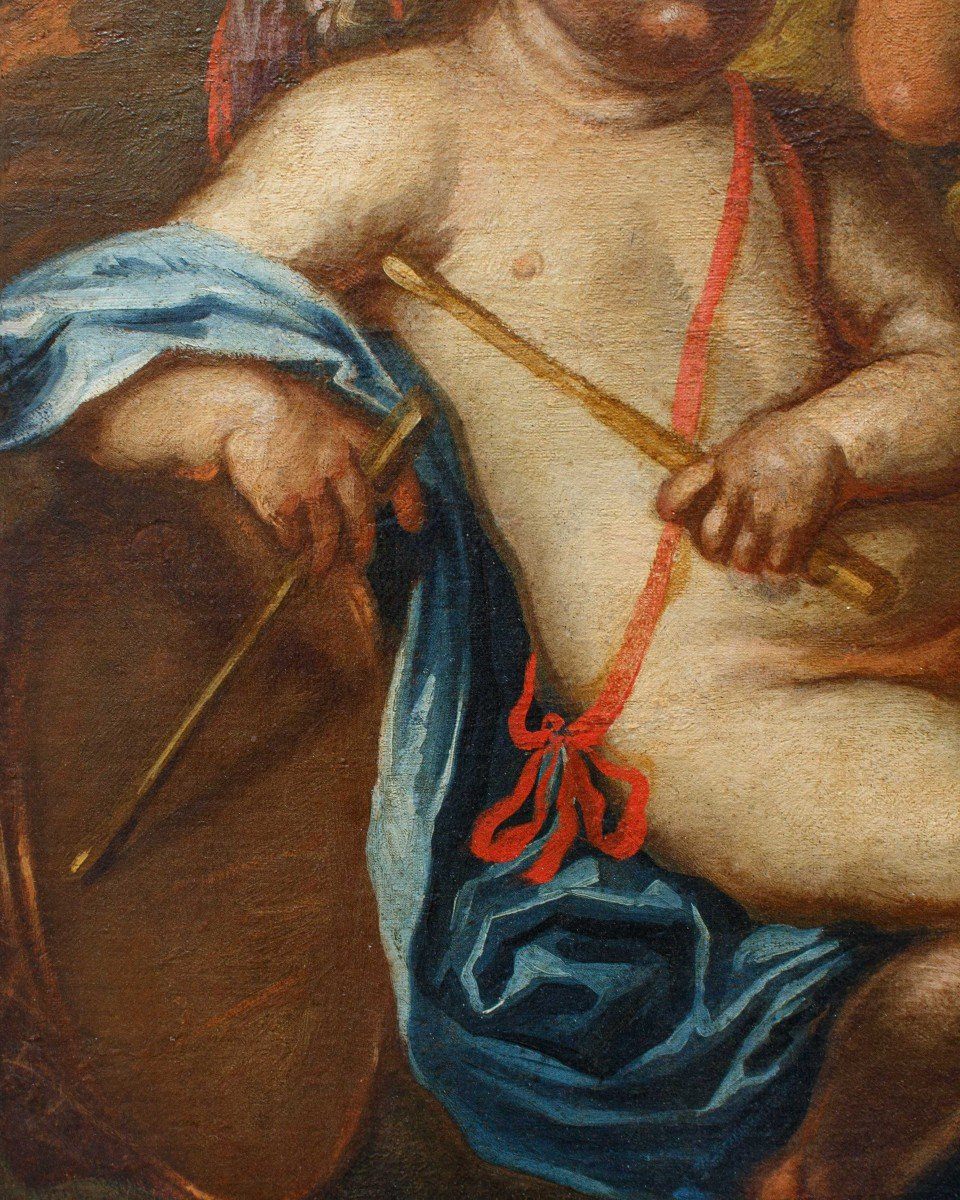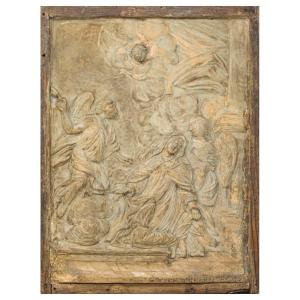Allegory of war (triad of putti)
Oil on canvas, cm 66 x 85,5
Frame, cm 82 x 104
The canvas in question, attributable to the hand of a painter of the Genoese baroque school active during the seventeenth century, depicts a trio of putti half covered by light colorful draperies, intent to do different things: the one on the right, surrounded by a pink cloak, holds two swords and carries before him a helmet; the one in the center, dressed with a golden drape, is immortalized in the moment when he brings his hands to the head, as the only protagonist not to present any attribute; finally, the third putto, placed on the left and wrapped in a delicate blue fabric, is depicted playing with his sticks a small drum, It is the same as that used in battle to give marching rhythm and orders to the army. In this sense, the three putti could also be interpreted as an allegory of war.
The three characters, immersed in a background of a sunset sky with soft orange tones, have similar physiognomic characteristics: the head framed by golden curls, the pink and plump cheeks, the eyes that avoid the viewer’s gaze, turning in other directions and the bodies blooming, but puerili, whose complexion rendered with warm tones, highlights the softness of the skin.
The work can be compared with some paintings related to the same subject by Domenico Piola (Genoa, 1627-1703), one of the most significant artistic entries in the panorama of Genoese baroque painting and owner of the most important town pictorial workshop of the time. As in the canvas under consideration, in the works of Piola the pictorial execution is distinguished by the warm chromatic tones of the incarnate putti and the soft plasticity of the bodies, The European Commission has recently published a report on the European Community’s research programme in the field of education and training. From the sources we know that important families of the local aristocracy, among which could be counted the Doria, the Spinola and the Balbi, They usually turned to him to decorate their palaces with stories of classic heroes, ancient emperors and allegories. Even the most frivolous subjects were appreciated and requested willingly by the nobility: the theme of putti, depicted in different attitudes and accompanied by various attributes, such as instruments, books, fruits, large pots and garlands are frequently documented in the inventories of the quadrerie or mentioned in descriptions of Genoese palaces.
Alongside Piola, other members of the Genoese school of the seventeenth century who tried to do the same subject, such as Anton Maria Vassallo (1617 - 1664/72), architect of the Allegory of Spring and Autumn, Valerio Castello (1624 - 1659) together with his pupil Bartolomeo Biscaino (1629 - 1657), or Domenico Guidobono (1668 - 1746).
The object is in good condition
With Ars Antiqua you can defer all amounts up to a maximum of € 7,500 at ZERO RATE, for a total of 15 INSTALLMENTS.
Ex. Tot. € 4,500 = Monthly installment € 300 for 15 months.
Ex. Tot. € 3,600 = Monthly installment € 720 for 5 months.
For amounts over €7,500 or for a longer grace period (over 15 installments), we can provide a custom payment.
Contact us directly to get the best quote.
LIVE TV
- SUNDAY 17.00 - 21.00 Dig.terr. 126 + 809 SKY
- THURSDAY 21.00 - 24.00 Dig.terr. 134 + 809 SKY
- Streaming on our website www.arsantiquasrl.com and on our social networks Facebook and Youtube
All the works proposed by Ars Antiqua are sold accompanied by a certificate of authenticity in accordance with the law and accurate fact sheet.
You can see the works directly at the showroom gallery in Milan, in via Pisacane 55 and 57.
We personally organize transport and deliveries of the works, both for Italy and abroad


















































 Le Magazine de PROANTIC
Le Magazine de PROANTIC TRÉSORS Magazine
TRÉSORS Magazine Rivista Artiquariato
Rivista Artiquariato